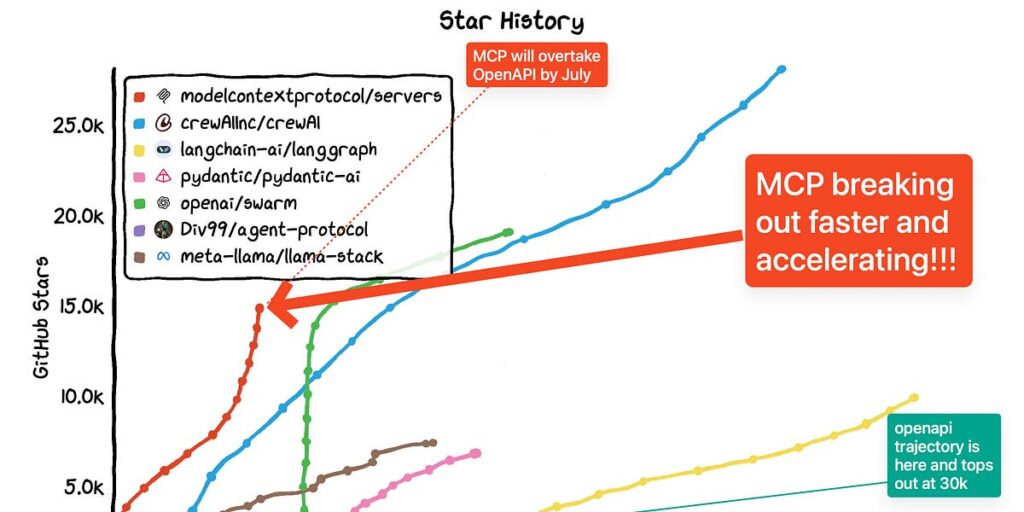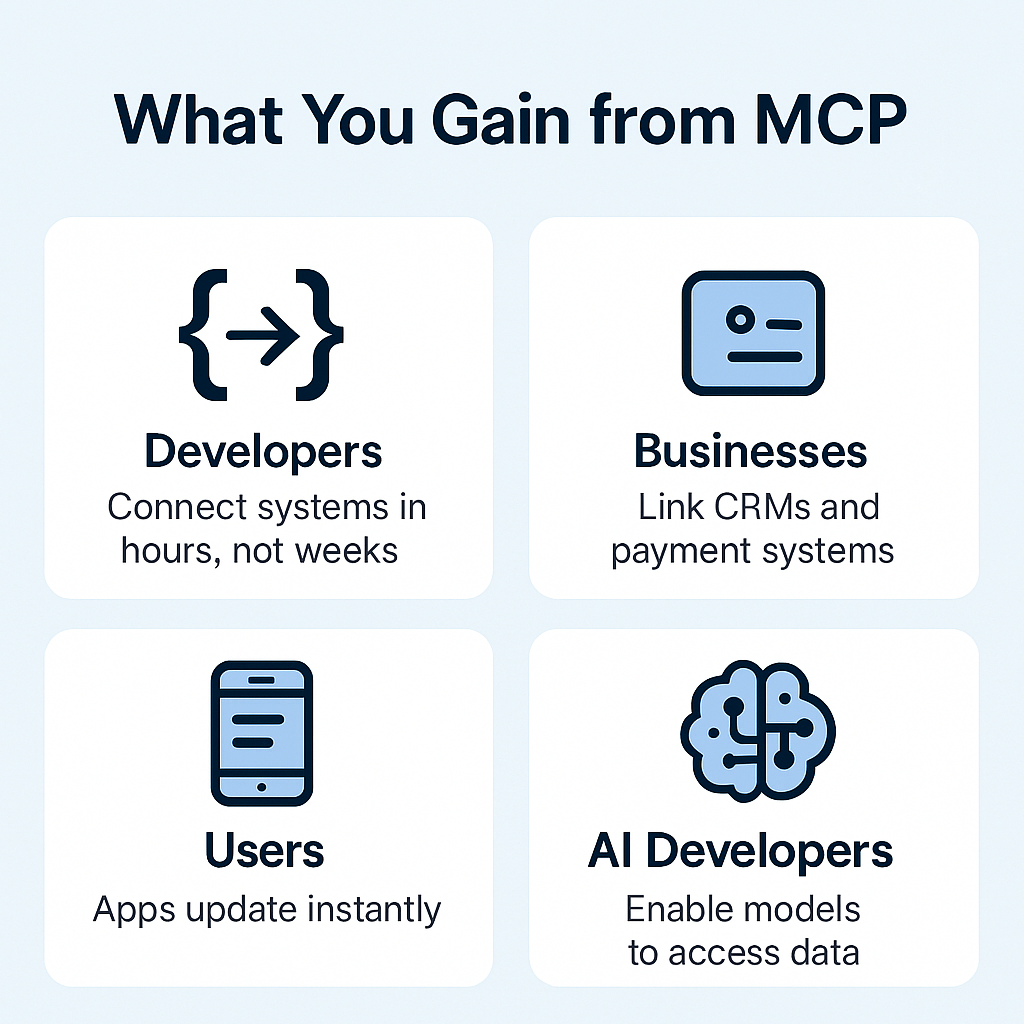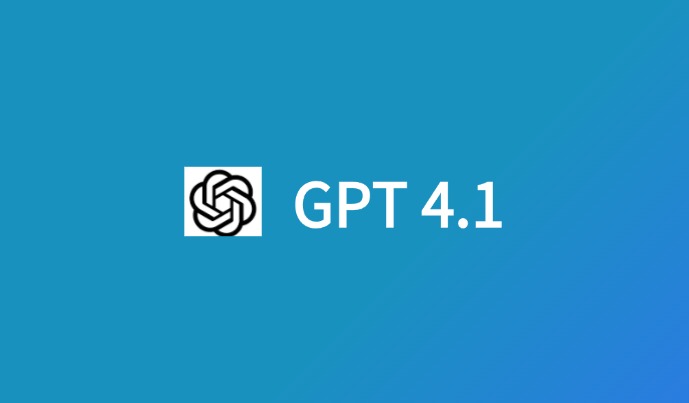Welcome to the future of data-driven intelligence — where applications, AI models, and systems don’t just talk to each other, they think together. Meet Model Context Protocol (MCP) — the connective tissue that’s redefining integration, interoperability, and AI context-awareness in 2025.
What is Model Context Protocol (MCP)?
Model Context Protocol (MCP) is a standard communication framework enabling AI models, APIs, and applications to exchange data and context seamlessly in real time. Developed to eliminate integration bottlenecks and fragmented data pipelines, MCP allows AI systems to stay responsive, accurate, and deeply connected.

Why It Matters in 2025 (With Stats)
Let’s be honest — integration pains are real. According to Gartner (2024):
- 70% of AI projects fail due to data silos and poor interoperability.
- 83% of businesses plan to increase AI integration budgets by 30% in 2025.
IDC (2024) predicts:
- Global AI spending will reach $500 billion by 2025.
- Companies using advanced integration protocols like MCP will see a 40% boost in operational efficiency.
Feeling those integration frustrations yet? We get it. Let’s break it down. For deeper insights, we recommend this read. → What Is MCP? Why It’s the Talk of Tech
Pain Points MCP Solves
Ever battled with any of these?
| Pain Point | How MCP Solves It |
|---|---|
| Disconnected systems | Seamless, standardized protocol |
| Integration projects that drag for months | Real-time connections within hours |
| AI models stuck with outdated context | Continuous, dynamic context sharing |
| Customer data scattered everywhere | Centralized, accessible live data |
Question for you: Which of these pain points is your biggest headache right now?
Motivations Behind Adopting MCP💡
Everyone loves faster, smarter apps — but why are businesses really jumping on MCP?
- Faster decision-making.
- Smarter, more personalized AI services.
- Lower integration costs.
- Better CX (Customer Experience).
- Competitive edge in crowded markets.
McKinsey’s 2024 survey reports:
- 60% of executives rank AI-driven personalization as their top priority.
- AI-enhanced services see 20-30% higher conversion rates.
What would faster, smarter AI mean for your business?
New Concept Alert: “Contextual Fusionism”
In a world powered by MCP, we coined a term: Contextual Fusionism — the art of fusing multiple, live data contexts from disparate systems into a unified, actionable intelligence layer for AI models.
Idea starters:
- A retail AI that merges weather, stock levels, and local events to optimize inventory in real-time.
- A healthcare assistant that dynamically pulls patient vitals, prescriptions, and live lab data.
Would you try Contextual Fusionism in your AI projects? Tell us how you’d use it.
Step-by-Step: How MCP Works
- Connect endpoints: CRMs, APIs, models, databases.
- Define shared context schema: What data should flow?
- Activate real-time data exchange.
- AI models consume and adapt dynamically.
- Monitor & optimize: Adjust schema, scale endpoints.
Pro Tip: Use MCP-ready tools like LangChain, Hugging Face Transformers, or OpenAPI v4.0 for easier integrations.
Common Mistakes to Avoid
| Mistake | Fix It By |
| Ignoring data governance | Standardize schemas, enforce permissions |
| Overcomplicating integrations | Start with 3-5 key systems, expand later |
| Forgetting context expiry | Implement time-to-live (TTL) policies |
| Underestimating monitoring needs | Set up observability dashboards early |
Which of these have tripped you up before?
Pros and Cons of MCP
| Pros | Cons |
| Real-time, contextual AI | Requires upfront planning |
| Faster integrations (hours not weeks) | New skills needed (context schemas) |
| Boosts AI accuracy and personalization | May need infrastructure upgrades |
4 Proven Strategies for MCP Integration
- Map critical data pathways first.
- Use MCP-compliant connectors.
- Prioritize security and compliance.
- Train cross-functional teams on data context management.
Tips & Tricks to Maximize MCP🔥
- Start small: integrate 2-3 high-impact systems first.
- Use automated schema discovery tools.
- Regularly audit context sources.
- Set clear KPIs: AI accuracy, latency, CX improvements.
Top MCP-Compatible Tools (2025)
| Tool Name | Function | Best For |
| LangChain | AI agent orchestration | AI chatbots, search systems |
| Hugging Face Hub | AI model hosting | Language & vision applications |
| OpenAPI v4.0 | API integration | Multi-platform data pipelines |
| DataStitch | Data syncing | E-commerce, healthcare, fintech |
Why MCP Benefits Matter
MCP isn’t just a technical upgrade — it’s a strategic growth lever:
- Deliver personalized AI experiences.
- Slash time-to-market.
- Cut integration costs.
- Future-proof your infrastructure.

IDC 2024: Companies using MCP-style frameworks outperform competitors by 38% in operational agility.
FAQs About Model Context Protocol (MCP)
Q1: Is MCP open-source?
Many implementations like LangChain’s context manager modules are open-source.
Q2: Do I need AI developers to use MCP?
Not necessarily — MCP connectors and API-based integrations can be handled by full-stack teams too.
Q3: What industries use MCP the most?
E-commerce, finance, healthcare, SaaS platforms.
Q4: Can I retrofit MCP into existing systems?
Yes, via API adapters and context gateways.
Q5: Does MCP slow down applications?
No — it improves response times by delivering live, relevant data.
Q6: Is MCP secure?
If implemented with encryption, context validation, and TTL policies.
Q7: How fast can we go live with MCP?
Most pilot projects launch within 3-7 days.
Q8: Can MCP improve AI hallucination issues?
Absolutely — by providing live, authoritative context.
Are You MCP-Ready?
If AI is part of your roadmap — or should be — MCP isn’t optional anymore. It’s the quickest, smartest way to future-proof your AI strategies and deliver personalized, intelligent services people genuinely want.
So, what’s stopping you? Need faster integrations? Better AI accuracy? Or simply to stop juggling data silos?
We’d love to hear your MCP ideas and challenges — drop your thoughts in the comments. 🚀



